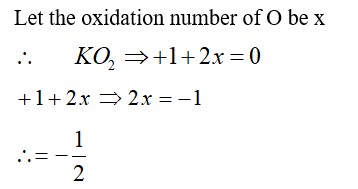11.21. Explain the following reactions
(a) Silicon is heated with methyl chloride at high temperature in the presence of copper;
(b) Silicon dioxide is treated with hydrogen fluoride;
(c) CO is heated with ZnO;
(d) Hydrated alumina is treated with aqueous NaOH solution.
11.21. Explain the following reactions
(a) Silicon is heated with methyl chloride at high temperature in the presence of copper;
(b) Silicon dioxide is treated with hydrogen fluoride;
(c) CO is heated with ZnO;
(d) Hydrated alumina is treated with aqueous NaOH solution.
-
1 Answer
-
(a) Silicon is heated with methyl chloride at high temperature in the presence of copper catalyst at 537 K, methyl substituted chlorosilanes MeSiCl3, Me2→SiCl2→, Me3→SiCl and Me4→Si are formed.
(b) When silicon dioxide is treated with hydrogen fluoride, first SiF4→ is formed and then hydro fluorosilicic acid is obtained.
SiO2 →+ 4HF → SiF4 →+ 2H2→O
SiF4+2HF → H2SiF6
(c) When CO is heated with ZnO, ZnO is reduced to Zn metal.
CO + ZnO →CO2 →+ Zn
(d) When hydrated alumina is treated with aqueous NaOH solution, it dissolves to form sodium meta al...more
Similar Questions for you
From BF3 to BI3 Lewis acidic strength increases
F2 is the strongest oxidising agent
HClO4 is the most acidic compound.
Taking an Exam? Selecting a College?
Get authentic answers from experts, students and alumni that you won't find anywhere else
Sign Up on ShikshaOn Shiksha, get access to
- 65k Colleges
- 1.2k Exams
- 679k Reviews
- 1800k Answers




